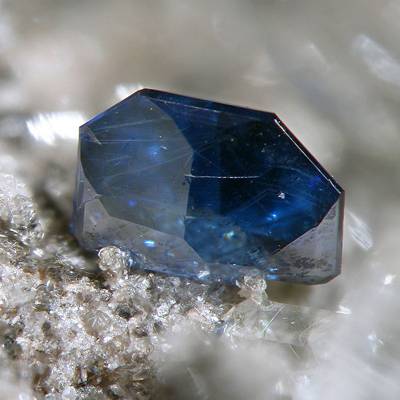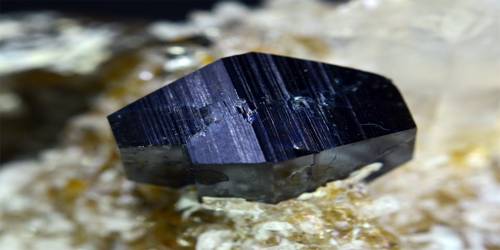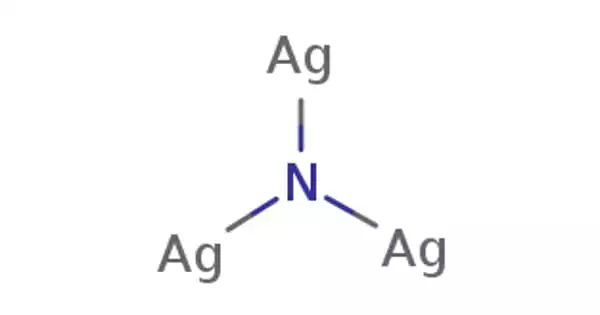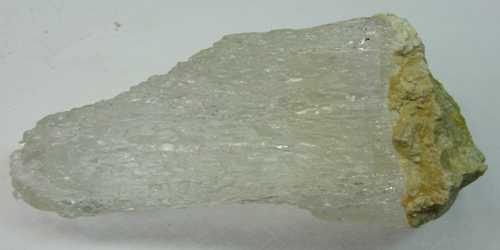Anatase is one of the three mineral forms of titanium dioxide (TiO2), the other two being brookite and rutile. At higher temperatures, about 915 degrees Celsius, anatase will automatically revert to the rutile structure. It is always found as small, isolated and sharply developed crystals, and like rutile, a more commonly occurring modification of titanium dioxide, it crystallizes in the tetragonal system; but, although the degree of symmetry is the same for both, there is no relation between the interfacial angles of the two minerals, except in the prism-zone of 45° and 90°.
The name Anatase is derived from the Greek word anatasis, which means elongation, in allusion to its elongated crystal habit (in relation to Rutile).
General Information
- Category: Oxide minerals
- Formula: TiO2
- Crystal system: Tetragonal
- Crystal class: Ditetragonal dipyramidal (4/mmm).
The common pyramid of anatase, parallel to the faces of which there are perfect cleavages, has an angle over the polar edge of 82°9′, the corresponding angle of rutile being 56°52½’.

Properties of Anatase
There are important differences between the physical characters of anatase and rutile: the former is less hard (5.5–6 vs. 6-6.5 Mohs) and dense (specific gravity about 3.9 vs. 4.2). Also, anatase is optically negative whereas rutile is positive, and its luster is even more strongly adamantine or metallic-adamantine than that of rutile.
- Formula mass: 79.88 g/mol
- Color: Black, reddish to yellowish brown, dark blue, gray
- Crystal habit: Pyramidal (crystals are shaped like pyramids), tabular (form dimensions are thin in one direction).
- Twinning: Rare on {112}
- Cleavage: Perfect on [001] and [011]
- Fracture: Subconchoidal
- Tenacity: Brittle
- Mohs scale hardness: 5.5–6
- Luster: Adamantine to splendent, metallic
- Streak: pale yellowish white
- Diaphaneity: Transparent to nearly opaque
- Specific gravity: 3.79–3.97.
Nice specimens of anatase are associated with quartz and are considered classics in the mineral world. The good luster, well-formed crystal shape, and interesting character make anatase a popular mineral for collectors.
Information Source;
















